There was no uniform regulation of lighthouses in British India until the passing of the Lighthouse Act of 1927. Before 1947, there were only 17 lighthouses in India and their light was generated by petroleum vapour (kerosene) or dissolved acetylene (gas) burners. Following the Independence of the nation, about 200 lighthouses were constructed on the Indian coastline, a few in Vizag, and they are all electrically powered with modern lamp and reflector technology.
The Bay of Bengal is renowned for its cyclones, and Vizag’s beachhead is renowned for its treacherous waves and rocky shores that added to the perils of navigation in days of sail and steamers. As Dolphin’s Nose was always the prominent headland to guide navigators, a beacon light, flagstaff and timing gun have existed on its summit since the early 1700s. Damaged and repaired during several cyclones, in 1843, the flagstaff was supplied with a Marryatt’s book of signals. In 1847, the inconvenience was experienced from the port not being furnished with the means of signalling ships, a set of signal flags was added. A temporary red beacon light, visible 5 miles out to sea, was installed after the 1876 cyclone damage. The beacon and flagstaff were destroyed in the cyclone of 1894.
7 August is celebrated every year as National Lighthouse Day. The day sounds like a good occasion to learn about all the historic lighthouses in Vizag.
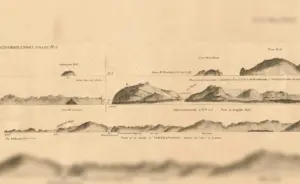
#1 Vizagapatam Lighthouse
The Fort flagstaff (on the west side of the lighthouse structure and then on the east side in the 1950s) has been there since the 1750s when all that guided the mariners to anchor their ships was the sighting of this flagstaff triangulated with several other fixed features like the Sergeant’s House (where St Aloysius started), Sugarloaf Hill in Waltair, the Mosque and Coastal Batteries. The fort flagstaff was raised in 1902 for hoisting storm-warning signals.
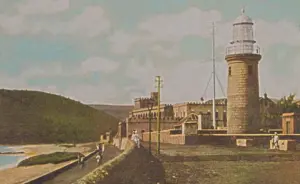
The lighthouse was commissioned on 16 December 1903. It had a fixed light source erected on a 52 feet masonry tower, visible from a distance of 19.3 km in clear weather. This light had a second order of brightness with a level of 4,250 candles. Breakwater lights followed this in 1932. In 1934, this fixed white light source was converted into an oscillating light. This lighthouse is commonly known as the Old Vizag Lighthouse, near Fort Flagstaff. It has been unused since 1975. Out of all the lighthouses in Vizag, Vizagapatam Lighthouse is the richest in history.
#2 East Point Light
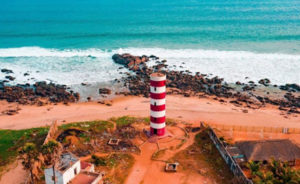
Referred to as Waltair Point in old books, this lighthouse is situated four miles northeast of Vizagapatam town. It is near an upper-roomed bungalow (Mason’s Bungalow) which is in ruins with a palm grove behind it. The point is low and sandy with a rocky foreshore, but the red hills in the vicinity are at times conspicuous. Vessels should not attempt to anchor near the point as foul ground surrounds it with a depth of 8 fathoms. The light tower was built in 1959. Out of all the lighthouses in Vizag, this one is the easiest to access.
#3 Sand Hill Lighthouse
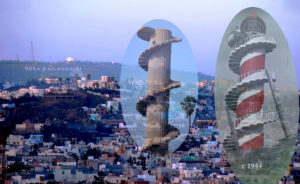
Built as a light beacon by the Royal Navy during World War 2, it was converted into a lighthouse in 1966. Located on Sand Hill, adjacent to King George Hospital (KGH), it was directly in line with the Coastal Battery. The beach area surrounding the battery was a restricted zone as it was used for military training of troops for the beach landings to recapture Malaya and Singapore from Japan as part of Operation Zipper in WW2. The war ended and Operation Zipper was never put into action. The light technology in this lighthouse was never updated and it has gradually become a ruin.
#4 Dolphin’s Nose Lighthouse
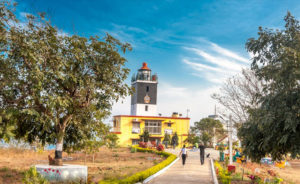
In 1926, two sites Nekonda point and Dolphin’s Nose had been inspected by the lighthouse expert Mr. Alan D. Stevenson for the construction of a major lighthouse in Vizagapatam and he recommended in favour of the Dolphin’s Nose site. The hill range on which this lighthouse exists is known as Yarada Konda and the site at which this lighthouse is constructed is known as Dolphin’s Nose, overlooking the entrance to Visakhapatnam Harbour. Visakhapatnam Harbour is a natural harbour in the backwaters formed by the Meghadri River and the hills around it. A beacon was originally provided near the present lighthouse site in 1940. It was a DA gas flasher of AGA make and remained in service up to 1957. The new lighthouse was ready after the installation of lighting equipment supplied by M/s B.B.T, Paris. Mr. Lal Bahadur Shastri, the then Minister of Transport and Communication inaugurated the Dolphin’s Nose Lighthouse on 15th June 1957, in presence of Mr. Nagendra Singh, Secretary and Mr. S.K. Lahiri, Director General of Lighthouses and Lightships. The light source was changed from an incandescent lamp to a metal halide lamp on 20th July 1997. Dolphin’s Nose is one of the most popular lighthouses in Vizag.
The lighthouse tower is a 19m high Square Masonry Tower (Black & White bands). Here, the light flashes white every 10 seconds. The lighthouse has a racon (radar), radio beacons, two radio masts, and a flagstaff. The radar range is 17 miles. The Radio Beacon equipment supplied by M/s Nippon, Japan was installed at the station that became operational on 1st March 1961. This equipment was replaced by a solid-state version supplied by M/s MACE, Visakhapatnam on 6th January 1991. The station was changed over to transmitting DGPS correction on 31st August 1998. The DGPS equipment was manufactured by M/s Leica GeoSystems, USA and supplied and installed by M/s Elcom Marine, Mumbai.
The Old Vizag Lighthouse became part of a nautical myth of the 1940s after the first Marconi ship-to-shore radio communications were installed. The following is the basis of a mythical call on a dark, squally, moonless night in the midst of a Bay of Bengal cyclone:
Caller talking by radio to a ship at sea says, “Ship at sea, please divert your course 15 degrees to the south to avoid a collision.”
The ship responded with, “Recommend you divert your course 15 degrees to the north to avoid a collision.”
The caller says, “Sorry, sir, but you will have to divert your course 15 degrees to the south to avoid a collision.”
The ship responds saying, “This is the captain of an English Royal Navy ship. I say again, divert your course.”
The caller says, “Pardon me sir, you must divert your course.”
Now the English ship says, “This is a Royal Navy destroyer, the second largest ship in the English fleet. Three cruisers, minesweepers and other support vessels accompany us on patrol of the Bay of Bengal. I demand that you change your course 15 degrees north. I say again, that is 1-5 degrees north or counter-measures will be taken. Do you understand?”
The caller responded, “Dear Captain, the next move is your call. This is Vizagapatam Lighthouse!”
What do you think? Is this story fact or fiction?
Should you have an anecdote or history on Vizag, the author would appreciate you contact him at jcastell@ozemail.com.au
Written by John Castellas whose family belonged to Vizag for 5 generations. Educated at St Aloysius, migrated to Melbourne, Australia in 1966, former General Manager Engineering at Boeing & Qantas Airways, in retirement Lecturers in Aviation Management at Swinburne University and is a Vizag aficionado.


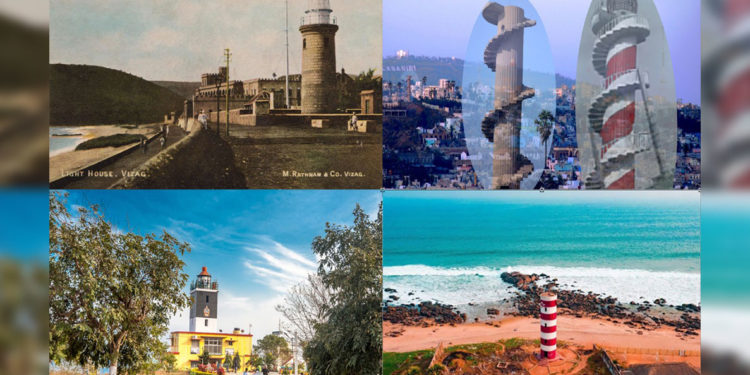







Discussion about this post